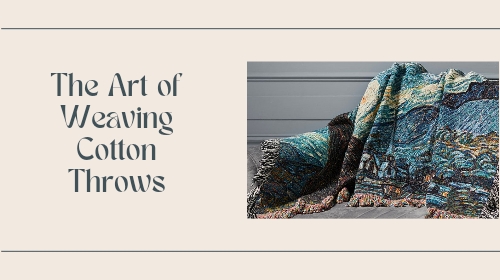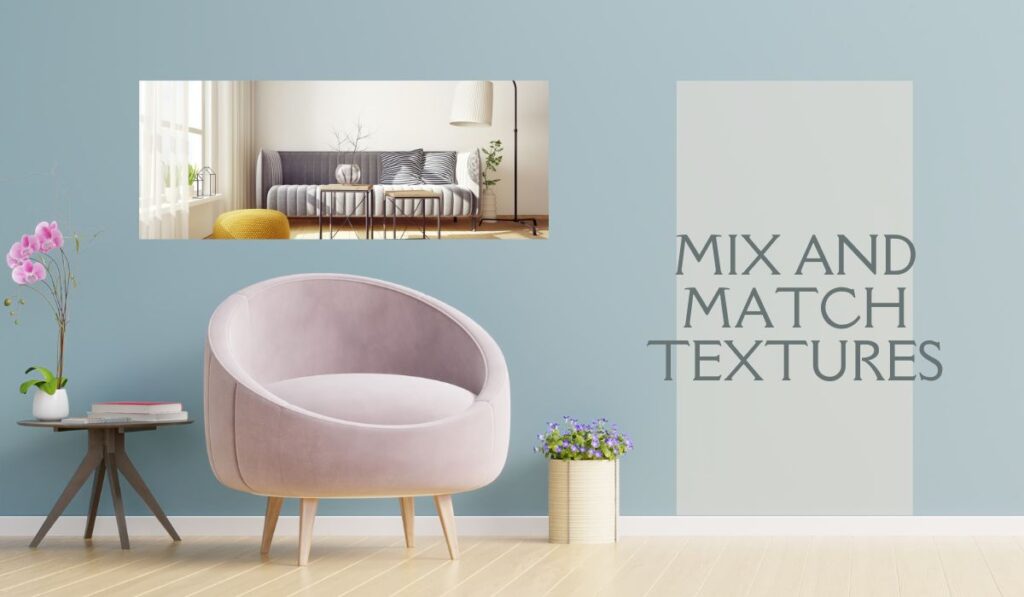The Art of Weaving Cotton Throws
Cotton throws offer warmth, texture, and flair to any area, making them a versatile and timeless complement to any home decor. Weavers have been weaving cotton throws for generations, employing ancient techniques to make gorgeous, soft blankets that are both utilitarian and ornamental. In this post, we will look at the entire weaving process, from choosing the correct yarn to finishing the edges. This article will provide you an insight into the skill of weaving cotton throws and why they are such a valued and enduring aspect of home decor, whether you are a weaver or a fan of homemade textiles.

Cotton throw weaving is an ancient art form that has been practiced for millennia. It takes expertise, patience, and attention to detail to weave cotton strands into a soft, comforting blanket. While contemporary technology has made the process more efficient, traditional cotton throw weaving processes remain highly prized and sought for.
The first step in making a cotton throw is to choose the proper type of cotton yarn. The ultimate texture and durability of the throw will be determined by the yarn quality. Cotton yarn of high quality is soft, breathable, and hypoallergenic, making it suitable for throws. It is critical to select a yarn that is neither too thick nor too thin, as this will effect the end result.
After selecting the yarn, the weaver would normally select a loom to use for the weaving procedure. There are numerous varieties of looms available, ranging from small hand-held devices to enormous industrial-sized equipment. The sort of loom used will be determined by the weaver’s experience and the design’s complexity.
Weaving a cotton throw normally consists of multiple phases. The first step is to prepare the loom by attaching the warp yarn to the loom and threading it through the heddles and reed. The pattern of the throw is then created by weaving the weft yarn back and forth through the warp yarn.
The weaver will need to adjust the tension on the loom as the weaving advances to ensure that the threads remain equally spaced and tight. This can be a delicate and time-consuming operation that necessitates a high level of ability and experience.
When the weaving is finished, the weaver will usually finish the edges of the throw to avoid fraying and to provide a decorative touch. Hemming the edges or adding a fringe, tassel, or other ornamental accent may be necessary.
The weaving technique produces a gorgeous, soft cotton throw that is ideal for curling up with on a cool evening. A cotton throw is a versatile and timeless addition to any home decor, whether you want a traditional pattern or a modern design.
Cotton throws are versatile, which is one of their benefits. They can be used in a variety of ways, such as draping over the arm of a sofa or chair or adding an extra layer of warmth to your bed. Cotton throws are available in a variety of colors and designs, making it simple to pick one that matches your existing decor.
Cotton throws also have the virtue of being long-lasting. A high-quality cotton throw can survive for many years if properly cared for, becoming a treasured family heirloom. Cotton is extremely simple to clean and preserve, making it an excellent choice for regular wear.
Cotton throws can bring a touch of beauty and sophistication to your home decor in addition to their functional purposes. When coupled with light-colored furniture or bedding, a black cotton throw, for example, can produce a dramatic and elegant appearance. A patterned cotton throw, on the other hand, can lend a whimsical and lively element to your design.
While selecting a cotton throw, it is critical to consider the throw’s size and weight. A larger, heavier throw may be preferable for draping over a chair or using as a lap blanket, whereas a smaller, lighter throw may be better for draping over a chair or using as a lap blanket.
To summarize, weaving cotton throws is a skilled and gratifying technique that demands time, precision, and originality. Every step of the process, from choosing the correct yarn and pattern to completing the edges, is critical to creating a beautiful and effective blanket.
Cotton throws offer warmth, texture, and flair to any area, making them a classic and flexible complement to any home design. Exploring the art of weaving cotton throws can provide a greater appreciation for the skill and expertise that goes into creating these beautiful and utilitarian objects, whether you are a weaver or a fan of handcrafted textiles.
Therefore, the next time you cuddle up with a cotton throw, take a moment to admire the meticulous artistry that went into its creation.




